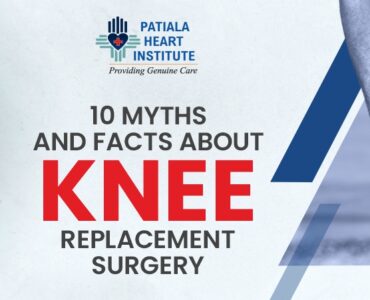Osteoporosis is a chronic bone disease characterized by decreased bone density and increased susceptibility to fractures. It results from an imbalance in bone remodeling, where bone resorption (breakdown) exceeds bone formation, leading to weakened and fragile bones. Osteoporosis often progresses silently without symptoms until a fracture occurs, typically in the spine, hips, wrists, or other weight-bearing bones. As bones become porous and brittle, individuals with osteoporosis are at increased risk of fractures, which can have significant consequences for mobility, independence, and overall quality of life.
Importance of Prevention and Treatment Strategies:
Prevention and treatment strategies for osteoporosis are crucial for reducing the risk of fractures, preventing disability, and preserving bone health. With the aging population and the associated increase in osteoporosis prevalence, addressing this condition has become a public health priority. Implementing effective prevention measures, such as lifestyle modifications, adequate nutrition, and regular exercise, can help maintain bone density and strength, reducing the likelihood of fractures later in life.
Additionally, early detection and appropriate treatment interventions, including medication therapy, hormone replacement therapy, and lifestyle management, are essential for managing osteoporosis and minimizing its impact on individuals’ lives. By raising awareness about osteoporosis and promoting preventive measures and treatment options, we can empower individuals to take control of their bone health and lead active, fulfilling lives.
Understanding Osteoporosis:
Osteoporosis is a progressive bone disease characterized by a decrease in bone density and quality, leading to increased bone fragility and susceptibility to fractures. It occurs when the rate of bone resorption (breakdown) exceeds the rate of bone formation, resulting in a net loss of bone mass. As a result, bones become weak, porous, and prone to fractures, especially in the spine, hips, wrists, and other weight-bearing bones. Osteoporosis is often referred to as a “silent disease” because it typically progresses without symptoms until a fracture occurs.
Risk Factors and Causes of Osteoporosis:
Several factors contribute to the development of osteoporosis, including:
- Age: Bone mass peaks in early adulthood and gradually declines with age, making older adults more susceptible to osteoporosis.
- Gender: Women are at higher risk of osteoporosis, especially after menopause, due to decreased estrogen levels, which accelerates bone loss.
- Family History: A family history of osteoporosis or fractures may increase an individual’s risk.
- Hormonal Changes: Conditions such as menopause, hypogonadism, and hyperthyroidism can lead to hormonal imbalances that accelerate bone loss.
- Lifestyle Factors: A sedentary lifestyle, poor nutrition, smoking, excessive alcohol consumption, and long-term use of certain medications (e.g., glucocorticoids) can contribute to bone loss.
- Medical Conditions: Certain medical conditions, such as rheumatoid arthritis, celiac disease, and hyperparathyroidism, can affect bone health and increase the risk of osteoporosis.
Consequences of Untreated Osteoporosis:
Untreated osteoporosis can have serious consequences, including:
- Fractures: Individuals with osteoporosis are at increased risk of fractures, particularly in the spine, hips, and wrists. These fractures can result in pain, disability, loss of mobility, and decreased quality of life.
- Chronic Pain: Fractures and compression of the vertebrae can lead to chronic pain, reduced physical activity, and limitations in daily activities.
- Loss of Independence: Severe fractures, especially hip fractures, can significantly impact independence and lead to long-term care needs.
- Increased Mortality: Hip fractures, in particular, are associated with increased mortality rates, especially in older adults.
Prevention Strategies:
Importance of Lifestyle Modifications:
- Dietary Considerations for Bone Health: Consuming a balanced diet rich in calcium and vitamin D is essential for maintaining bone health. Foods such as dairy products, leafy greens, nuts, and fortified foods can help meet calcium and vitamin D requirements.
- Regular Exercise: Engaging in weight-bearing and muscle-strengthening exercises helps build and maintain bone density. Activities such as walking, jogging, dancing, and resistance training are beneficial for bone health.
- Avoidance of Smoking and Excessive Alcohol Consumption: Smoking and excessive alcohol consumption can accelerate bone loss and increase the risk of fractures. Quitting smoking and limiting alcohol intake are important for preserving bone health.
Ensuring Adequate Intake of Calcium and Vitamin D:
Adequate intake of calcium and vitamin D is essential for bone health. Supplements may be necessary for individuals who are unable to obtain sufficient nutrients through diet alone.
Falls Prevention Strategies to Minimize Fracture Risk:
Implementing fall prevention strategies, such as removing hazards in the home, installing handrails and grab bars, wearing appropriate footwear, and participating in balance and strength training programs, can help reduce the risk of falls and fractures in individuals with osteoporosis.
Screening and Diagnosis of Osteoporosis:
Role of Bone Density Testing (DEXA Scan) in Early Detection:
Bone density testing, typically done using Dual-Energy X-ray Absorptiometry (DEXA) scans, plays a crucial role in the early detection of osteoporosis. These scans measure bone mineral density (BMD) and assess the risk of fractures.
Importance of Regular Check-ups and Screenings:
Regular check-ups and screenings are important for identifying individuals at risk of osteoporosis, especially older adults and those with risk factors. Healthcare providers can assess bone health, provide guidance on preventive measures, and recommend appropriate interventions.
Understanding Bone Density T-Scores and Their Significance:
Bone density T-scores compare an individual’s bone density to that of a healthy young adult of the same gender. T-scores below -2.5 indicate osteoporosis, while scores between -1.0 and -2.5 indicate osteopenia (low bone density). Understanding T-scores helps healthcare providers assess fracture risk and determine appropriate management strategies.
Treatment Options:
Pharmacological Interventions:
- Use of Bisphosphonates, Selective Estrogen Receptor Modulators (SERMs), and Other Medications: Bisphosphonates, such as alendronate and risedronate, are commonly prescribed to slow bone loss and reduce fracture risk in individuals with osteoporosis. SERMs, such as raloxifene, mimic the effects of estrogen in bone tissue, helping to preserve bone density. Other medications, including denosumab, teriparatide, and romosozumab, may also be used to improve bone strength and reduce fracture risk.
- Side Effects and Considerations for Medication Therapy: While pharmacological interventions can be effective in treating osteoporosis, they may be associated with side effects such as gastrointestinal upset, esophageal irritation, and atypical fractures. Healthcare providers carefully consider the individual’s medical history, risk factors, and preferences when selecting medications and monitor for potential adverse effects.
Hormone Replacement Therapy (HRT) for Postmenopausal Women:
Hormone replacement therapy, which involves the use of estrogen with or without progestin, may be prescribed to postmenopausal women to help prevent bone loss and reduce fracture risk. However, the use of HRT is associated with potential risks, including an increased risk of breast cancer, blood clots, and stroke. Healthcare providers weigh the benefits and risks of HRT on an individual basis and consider alternative treatments for osteoporosis management.
Calcium and Vitamin D Supplementation:
Adequate calcium and vitamin D intake is essential for maintaining bone health and preventing osteoporosis. Calcium supplements may be recommended for individuals who are unable to obtain sufficient calcium through diet alone, while vitamin D supplements help enhance calcium absorption and bone mineralization. Healthcare providers assess individual nutrient needs and prescribe supplements as necessary to support bone health.
Lifestyle Management:
Importance of Balanced Nutrition for Bone Health:
Consuming a balanced diet rich in calcium, vitamin D, protein, and other essential nutrients is crucial for maintaining bone health and preventing osteoporosis. Foods such as dairy products, leafy greens, nuts, seeds, and fortified foods provide important nutrients for bone strength and density.
Regular Exercise and Physical Activity Recommendations:
Engaging in weight-bearing exercises, such as walking, jogging, dancing, and strength training, helps stimulate bone growth and maintain bone density. Exercise also improves balance, coordination, and muscle strength, reducing the risk of falls and fractures.
Fall Prevention Strategies, Including Home Safety Modifications:
Implementing fall prevention strategies, such as removing tripping hazards, installing handrails and grab bars, improving lighting, and using assistive devices, can help reduce the risk of falls and fractures in individuals with osteoporosis.
Smoking Cessation and Moderation of Alcohol Intake for Bone Health:
Quitting smoking and limiting alcohol consumption are important for preserving bone health and reducing the risk of osteoporosis. Smoking and excessive alcohol intake can accelerate bone loss and increase fracture risk, so individuals are encouraged to seek support and resources for smoking cessation and alcohol moderation.
Patient Education and Support:
Patient education plays a crucial role in raising awareness about osteoporosis, its risk factors, and preventive measures. Healthcare providers provide information on lifestyle modifications, medication adherence, and fall prevention strategies to empower individuals to take control of their bone health.
Support Groups and Resources for Individuals Living with Osteoporosis:
Support groups and resources for individuals living with osteoporosis provide valuable emotional support, education, and practical guidance for managing the condition. These groups offer opportunities for individuals to share experiences, learn from others, and access resources for coping with osteoporosis.
Counseling on Medication Adherence and Lifestyle Modifications:
Healthcare providers offer counseling and support to help individuals adhere to medication regimens and make necessary lifestyle modifications to manage osteoporosis effectively. Counseling may include discussions on medication benefits and side effects, dietary recommendations, exercise plans, and fall prevention strategies.
Conclusion
Early detection of osteoporosis and proactive management strategies are essential for reducing fracture risk. Only top-rated bone specialists can help preserve bone health and improve the overall quality of life for individuals affected by the condition.
The Patiala Heart Institute offers comprehensive bone health services for individuals seeking orthopaedic specialists in Patiala. Our team of experts includes some of the best osteoporosis specialists in Patiala, providing personalized care and advanced treatments for osteoporosis and related conditions. Take proactive steps to maintain your bone health by scheduling an appointment with our renowned specialists today.







